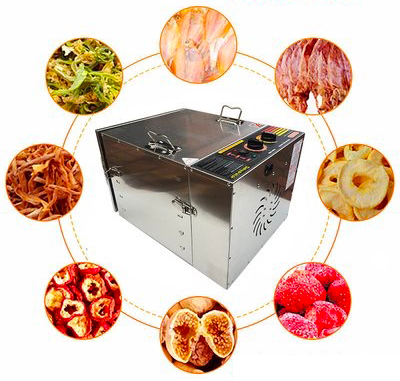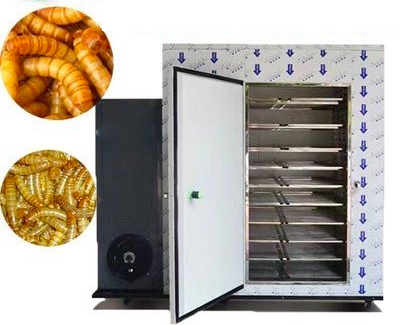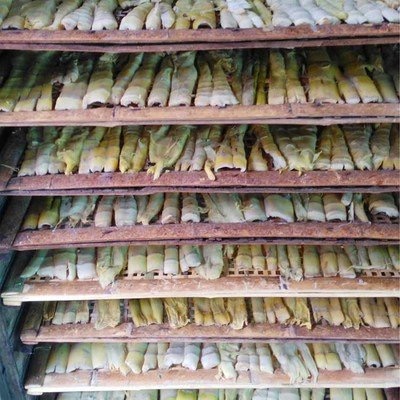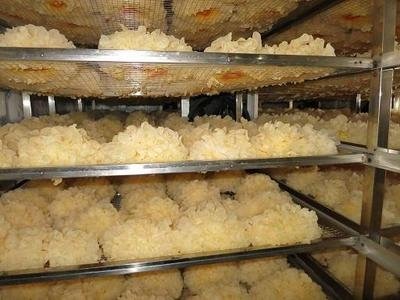
Content Menu
● Understanding Heat Pump Dryers
>> How Heat Pump Dryers Work
● Energy Efficiency of Heat Pump Dryers
>> Lower Operating Temperatures
>> Reduced Energy Consumption
>> Environmental Impact
● Benefits of Using Heat Pump Dryers for Food Processing
>> Preservation of Nutritional Value
>> Improved Quality of Dried Products
>> Versatility in Food Processing
>> Cost-Effectiveness
● Installation and Maintenance of Heat Pump Dryers
>> Installation Considerations
>> Maintenance Tips
● The Future of Food Drying Technology
>> Integration with Smart Technology
>> Expanding Applications
● Conclusion
● Frequently Asked Questions
>> 1. What is the main advantage of using a heat pump dryer?
>> 2. Can heat pump dryers be used for all types of food?
>> 3. How do heat pump dryers compare to traditional dryers in terms of cost?
>> 4. What maintenance is required for heat pump dryers?
>> 5. Are heat pump dryers environmentally friendly?
In the world of food processing, drying is a crucial step that significantly impacts the quality, shelf life, and flavor of food products. As a leading manufacturer of food drying machines in China, we understand the importance of efficiency and innovation in this industry. One of the most advanced technologies in food drying is the heat pump dryer. This article explores the advantages of heat pump dryers, particularly their energy efficiency compared to traditional drying methods.

Understanding Heat Pump Dryers
Heat pump dryers utilize a unique technology that allows them to extract moisture from food products while consuming less energy. Unlike traditional dryers that rely on high temperatures to evaporate moisture, heat pump dryers operate at lower temperatures, making them gentler on food and preserving its nutritional value.
How Heat Pump Dryers Work
Heat pump dryers work by circulating air through a closed-loop system. The process begins with the heat pump extracting heat from the surrounding air. This heat is then transferred to the air that passes through the dryer, which warms it up. The warm air is then blown into the drying chamber, where it absorbs moisture from the food. After the air has absorbed moisture, it is cycled back to the heat pump, where the moisture is removed, and the air is reheated for another cycle.
This continuous cycle allows heat pump dryers to maintain a consistent temperature and humidity level, ensuring that food is dried evenly and efficiently.
Energy Efficiency of Heat Pump Dryers
Lower Operating Temperatures
One of the primary reasons heat pump dryers are more energy-efficient than traditional models is their ability to operate at lower temperatures. Traditional dryers often require high temperatures to evaporate moisture, which can lead to significant energy consumption. In contrast, heat pump dryers can effectively dry food at temperatures as low as 30-60 degrees Celsius. This not only reduces energy usage but also minimizes the risk of damaging delicate food items.
Reduced Energy Consumption
Heat pump dryers are designed to recycle energy. The heat extracted from the air is reused in the drying process, which significantly reduces the amount of energy needed to operate the machine. Studies have shown that heat pump dryers can use up to 50% less energy than traditional dryers, making them a more sustainable choice for food processing.
Environmental Impact
By using less energy, heat pump dryers contribute to a lower carbon footprint. As businesses and consumers become more environmentally conscious, the demand for energy-efficient appliances continues to grow. Heat pump dryers not only help reduce energy costs but also align with sustainable practices that are increasingly important in the food industry.
Benefits of Using Heat Pump Dryers for Food Processing
Preservation of Nutritional Value
One of the significant advantages of heat pump dryers is their ability to preserve the nutritional value of food. The lower drying temperatures help retain vitamins and minerals that can be lost during high-temperature drying processes. This is particularly important for health-conscious consumers who seek nutritious food options.
Improved Quality of Dried Products
Heat pump dryers provide a more controlled drying environment, which results in higher quality dried products. The consistent temperature and humidity levels prevent over-drying and ensure that food retains its flavor, color, and texture. This is essential for products like fruits, vegetables, and herbs, where quality is paramount.
Versatility in Food Processing
Heat pump dryers are versatile and can be used for a wide range of food products, including fruits, vegetables, meats, and herbs. This adaptability makes them an excellent choice for food manufacturers looking to diversify their product offerings. Additionally, heat pump dryers can be used for various drying methods, such as batch drying and continuous drying, depending on the production needs.

Cost-Effectiveness
While the initial investment in a heat pump dryer may be higher than that of traditional dryers, the long-term savings on energy costs and improved product quality can make them a more cost-effective option. Businesses can benefit from reduced operational costs and increased profitability by producing higher-quality dried products that command better prices in the market.
Installation and Maintenance of Heat Pump Dryers
Installation Considerations
When installing a heat pump dryer, it is essential to consider factors such as space, ventilation, and power supply. Heat pump dryers require adequate space for airflow and maintenance access. Proper ventilation is also crucial to ensure efficient operation and prevent overheating.
Maintenance Tips
Maintaining a heat pump dryer is relatively straightforward. Regular cleaning of filters and heat exchangers is essential to ensure optimal performance. Additionally, periodic inspections of the system can help identify any potential issues before they become significant problems.
The Future of Food Drying Technology
As technology continues to advance, the food processing industry is likely to see even more innovations in drying methods. Heat pump dryers are at the forefront of this evolution, offering solutions that not only meet the demands of modern food production but also align with sustainability goals.
Integration with Smart Technology
The integration of smart technology into heat pump dryers is an exciting development. Smart sensors can monitor humidity levels and adjust drying times automatically, ensuring optimal drying conditions. This not only enhances efficiency but also allows for better quality control, as manufacturers can track the drying process in real-time.
Expanding Applications
The applications of heat pump dryers are expanding beyond traditional food processing. Industries such as pharmaceuticals and cosmetics are beginning to adopt this technology for drying sensitive materials. The ability to control temperature and humidity makes heat pump dryers suitable for a variety of products that require careful handling during the drying process.
Conclusion
Heat pump dryers represent a significant advancement in food drying technology. Their energy efficiency, ability to preserve nutritional value, and versatility make them an ideal choice for food manufacturers. As the demand for sustainable and high-quality food products continues to grow, heat pump dryers will play a crucial role in meeting these needs.

Frequently Asked Questions
1. What is the main advantage of using a heat pump dryer?
The main advantage is energy efficiency, as heat pump dryers use significantly less energy than traditional dryers while preserving the quality of the food.
2. Can heat pump dryers be used for all types of food?
Yes, heat pump dryers are versatile and can be used for a wide range of food products, including fruits, vegetables, meats, and herbs.
3. How do heat pump dryers compare to traditional dryers in terms of cost?
While the initial investment may be higher, heat pump dryers can lead to long-term savings on energy costs and improved product quality, making them more cost-effective over time.
4. What maintenance is required for heat pump dryers?
Regular cleaning of filters and heat exchangers, along with periodic inspections, is essential to maintain optimal performance.
5. Are heat pump dryers environmentally friendly?
Yes, heat pump dryers have a lower carbon footprint due to their reduced energy consumption, making them a more sustainable choice for food processing.












